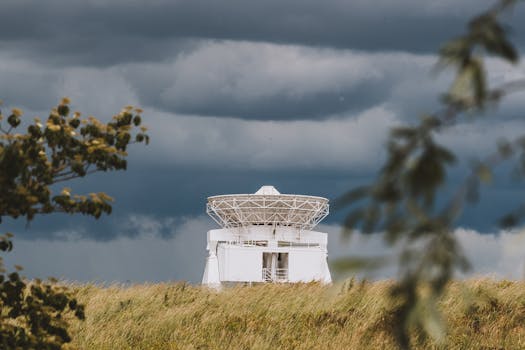
GEO Satellites: Unlocking the Power of Geostationary Orbit
GEO satellites, or Geostationary satellites, are a type of satellite that orbits the Earth at an altitude of approximately 36,000 kilometers, which is about 1/10 of the way to the Moon. At this height, the satellite’s orbital period matches the Earth’s rotational period, allowing it to remain stationary above a specific point on the equator. This unique characteristic makes GEO satellites an essential component of modern satellite communications, providing a wide range of services including television broadcasting, telecommunications, and weather forecasting.
GEO satellites have been in use for over five decades, with the first geostationary satellite, Syncom 2, launched in 1963. Since then, the technology has evolved significantly, with modern GEO satellites capable of transmitting high-definition television signals, providing internet connectivity, and supporting critical telecommunications infrastructure. The geostationary orbit is a unique and valuable resource, offering a fixed perspective on the Earth, which is ideal for applications such as weather forecasting, Earth observation, and communications.
How GEO Satellites Work

GEO satellites work by transmitting and receiving signals to and from Earth stations, which are typically located on the ground. The satellite’s antennas are designed to receive signals from the Earth station and re-transmit them back to Earth, allowing the signal to be received by other Earth stations or directly by consumers. The satellite’s orbital position and altitude allow it to maintain a fixed position relative to the Earth, ensuring that the signal is consistently strong and reliable.
The process of launching a GEO satellite involves several stages, including launch, transfer orbit, and station-keeping. The satellite is first launched into a transfer orbit, which is an elliptical orbit that takes the satellite from the launch site to the geostationary orbit. Once in the geostationary orbit, the satellite performs a series of maneuvers to achieve its final position and orientation. The satellite then enters a station-keeping phase, where it maintains its position and altitude, making small adjustments as needed to ensure it remains within a narrow range of its assigned orbital slot.
Applications of GEO Satellites

GEO satellites have a wide range of applications, including television broadcasting, telecommunications, weather forecasting, and Earth observation. Television broadcasting is one of the most common uses of GEO satellites, with many countries relying on them to transmit television signals to remote or underserved areas. Telecommunications is another significant application, with GEO satellites providing internet connectivity, voice, and data services to consumers and businesses.
Weather forecasting is also a critical application of GEO satellites, with satellites such as GOES-16 and Himawari-8 providing high-resolution imagery of the Earth’s weather patterns. These satellites are equipped with advanced sensors and cameras, allowing them to capture detailed images of clouds, storms, and other weather phenomena. Earth observation is another important application, with GEO satellites providing valuable data on the Earth’s climate, oceans, and land surfaces.
Challenges and Opportunities

Despite the many benefits of GEO satellites, there are also challenges and opportunities that need to be addressed. One of the main challenges is the increasing congestion in the geostationary orbit, with many satellites competing for limited orbital slots. This has led to concerns about interference, collisions, and the potential for a catastrophic failure of the satellite system.
Another challenge is the issue of space debris, with many old and defunct satellites remaining in the geostationary orbit, posing a risk to operational satellites. The removal of these satellites is a complex and costly process, requiring significant resources and coordination. However, there are also opportunities for innovation and growth, with new technologies and applications emerging that take advantage of the unique characteristics of the geostationary orbit.
For example, the development of new propulsion systems and satellite designs is enabling the creation of more efficient and sustainable satellites, which can operate for longer periods and provide more services. The increasing demand for satellite-based services, particularly in areas such as telecommunications and Earth observation, is driving investment and innovation in the sector, with many new companies and technologies emerging to meet the growing needs of consumers and businesses.
See more:




